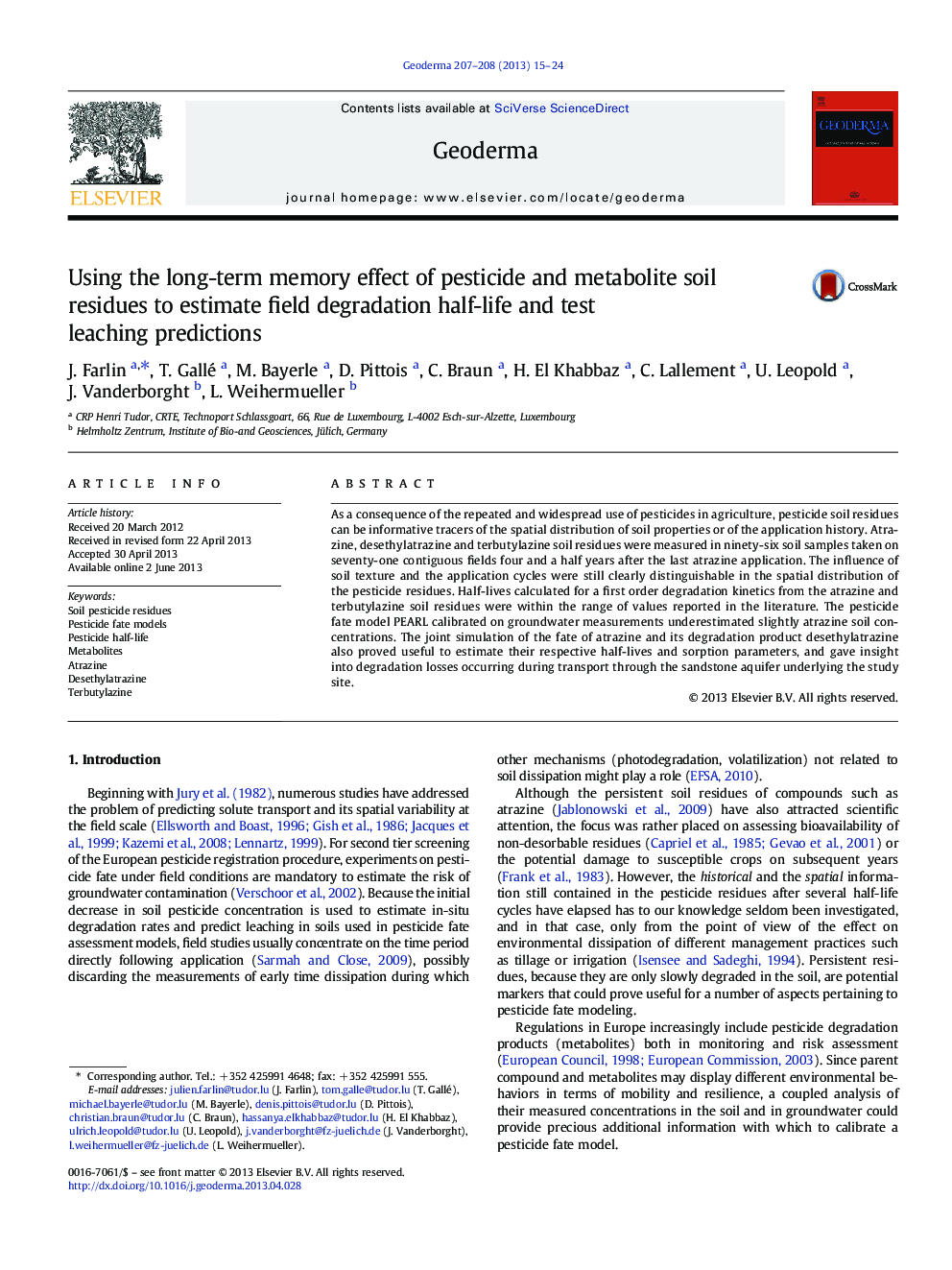| Article ID | Journal | Published Year | Pages | File Type |
|---|---|---|---|---|
| 6409144 | Geoderma | 2013 | 10 Pages |
Abstract
As a consequence of the repeated and widespread use of pesticides in agriculture, pesticide soil residues can be informative tracers of the spatial distribution of soil properties or of the application history. Atrazine, desethylatrazine and terbutylazine soil residues were measured in ninety-six soil samples taken on seventy-one contiguous fields four and a half years after the last atrazine application. The influence of soil texture and the application cycles were still clearly distinguishable in the spatial distribution of the pesticide residues. Half-lives calculated for a first order degradation kinetics from the atrazine and terbutylazine soil residues were within the range of values reported in the literature. The pesticide fate model PEARL calibrated on groundwater measurements underestimated slightly atrazine soil concentrations. The joint simulation of the fate of atrazine and its degradation product desethylatrazine also proved useful to estimate their respective half-lives and sorption parameters, and gave insight into degradation losses occurring during transport through the sandstone aquifer underlying the study site.
Keywords
Related Topics
Physical Sciences and Engineering
Earth and Planetary Sciences
Earth-Surface Processes
Authors
J. Farlin, T. Gallé, M. Bayerle, D. Pittois, C. Braun, H. El Khabbaz, C. Lallement, U. Leopold, J. Vanderborght, L. Weihermueller,
